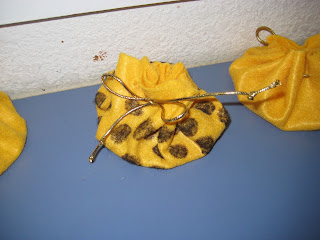Most of the fifth and sixth graders in our Edot class participated in field trips to the Mother Lode country with their fourth grade secular school classes. But they were likely never taught then about the stabilizing influence that the pioneer Jews had on the rough-and-tumble times in that area. Rather than participating in the actual mining of gold, most of the Jewish pioneers brought with them their old-world skills of tailoring and merchandising. Many spent their first few years in California as itinerant peddlers, carrying up to 100 pounds of merchandise on their backs. If they were lucky, they saved enough money to invest in a pushcart, and then, if they were very successful, they invested their earnings in a wood or brick building. These buildings were often the only permanent structures in the mining towns, surrounded by the miners' tents. Because the Jewish shopkeeper had the only permanent establishment in the camp, he often also served as the banker, sheriff (some shops used their locked storerooms as jail cells, when needed), judge, and assayer. On early maps of the Mother Lode region from the early 1850's, many of the mining camps were simply referred to by the names of the Jewish shopkeepers who owned the only building in the camp- "Goldstein's" and "Kaufman's" to name two.
On November 11th this year, Edot students and their families will participate in a "Jews of the Gold Rush" field trip to Sonora and Columbia State Historic Park. They'll learn about these Jewish pioneers, many of whom owned shops on Columbia's Main Street, and many more of whom are buried in the Jewish Pioneer Cemetery in Sonora.
To prepare for the field trip, the students made small versions of the pouches that many miners used to hold the gold dust they discovered. Many travelers in those days, and certainly this included the Jewish peddlers, carried dried food in the bags. We'll be preparing hardtack in two weeks, and the students will be able to put some pieces into their pouches for the trip to Sonora.
This week the fifth and sixth graders began to hold hafsaka (recess) during the weekday sessions on the lawn outside the Social Hall. Josh, my satellite teacher, was successful in getting a ball game organized with many of the students, while other students stood or sat around schmoozing. With the beautiful east bay hills as backdrop, it looks like we'll be using the lawn on a regular basis now for hafsaka (weather-permitting).
Finally, continuing on with building our Hebrew vocabulary using the Hebrew Through Movement approach, I introduced the verb "to run" (la'rootz) and the words "baneem" (boys), "banot" (girls), and "koolam" (everyone). Put these new words together with the "la'shevet" (sit), "la'koom" (stand), "la'lechet" (walk), "la'atzor" (stop), "leekpotz" (jump), and "l'histovev" (turn around) verbs we've already learned, and a lot of fun results!
 |
| LA'SHEVET (SIT) |
 |
| LA'ROOTZ (RUN) |
 |
| LEEKPOTZ (JUMP) |
 |
| KOOLAM LA'ROOTZ (EVERYONE RUN) |












No comments:
Post a Comment